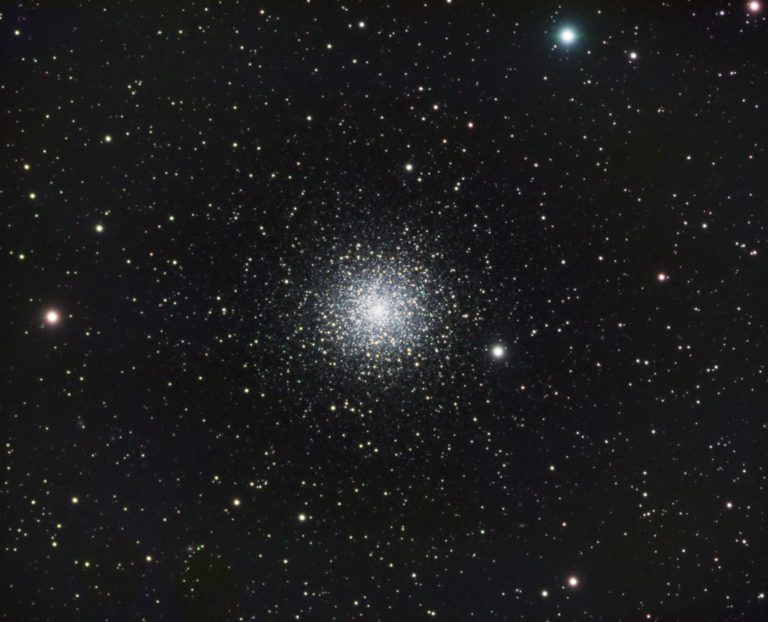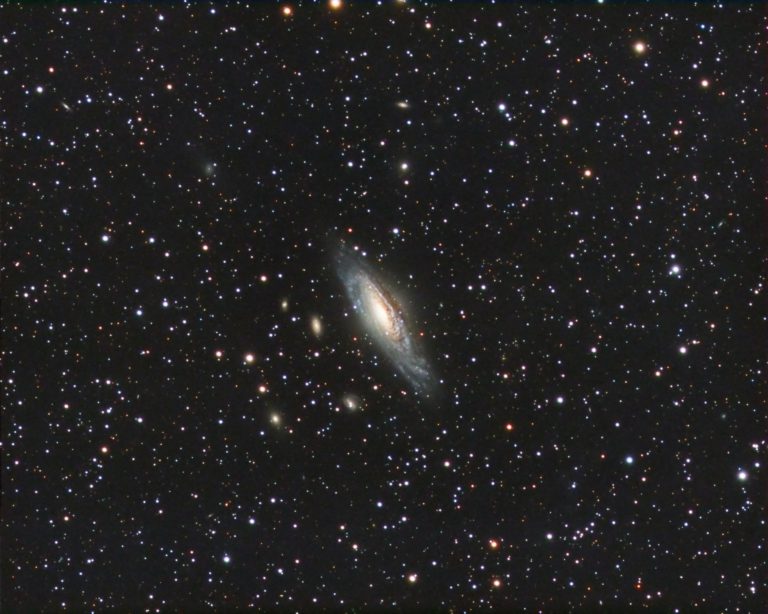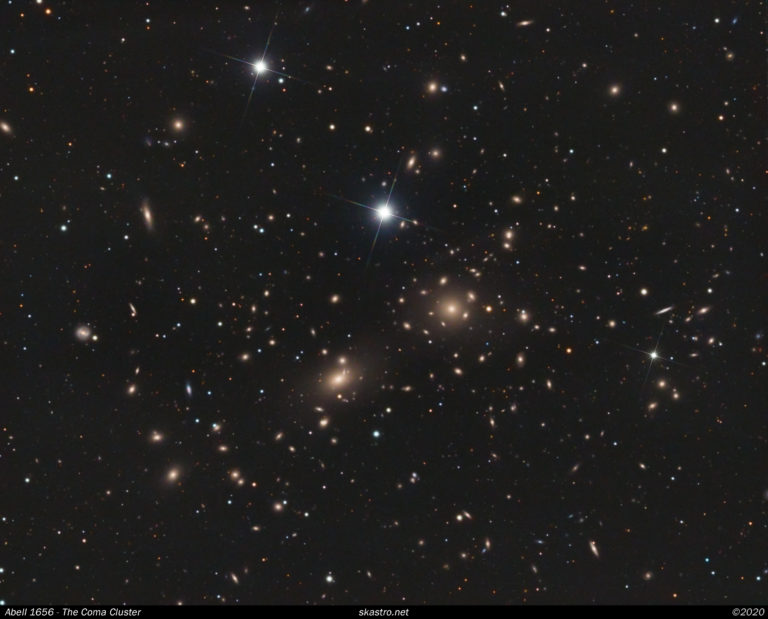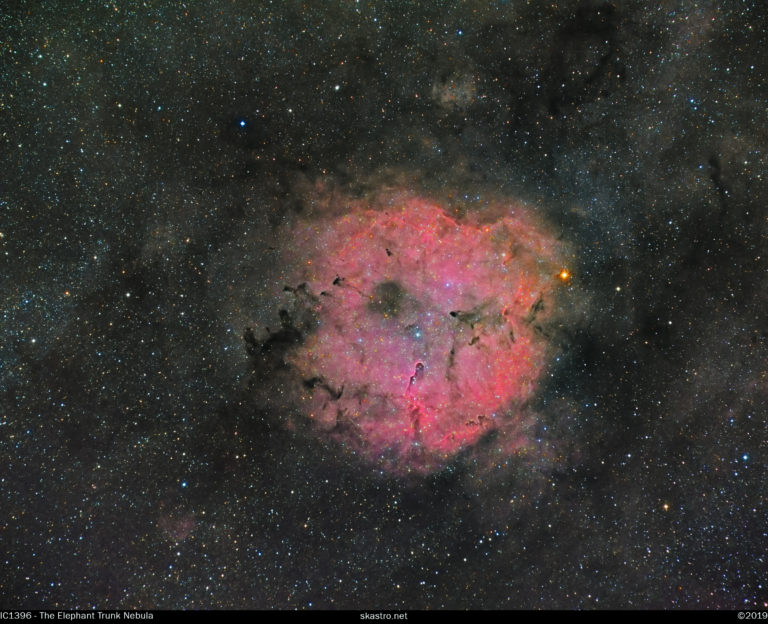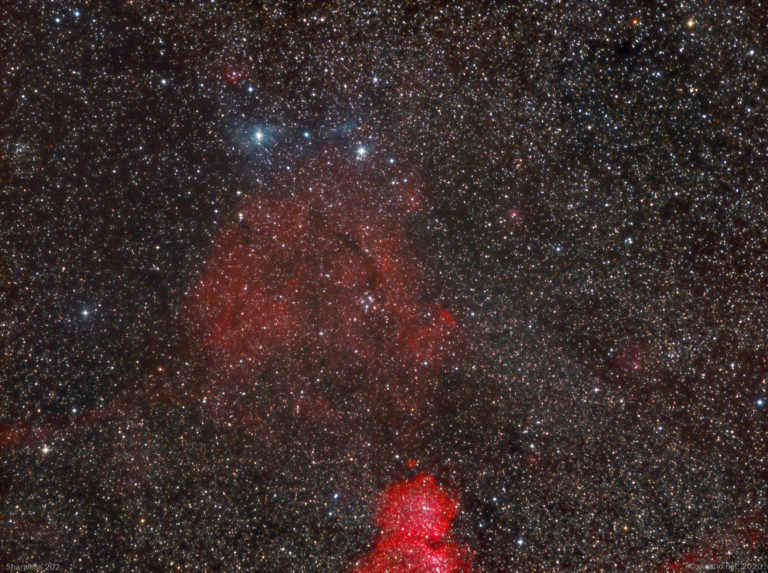M15 is a magnificent Globular Cluster in the constellation of Pegasus, which after M13 and M92 is arguably the best one visible to Northern Hemisphere observers. It is located about 34000 light years away and is about 125 light years in diameter with an age of 12 billion years, it is as old as the Milky Way itself. M15 Globular Cluster Image Technical Data Imaged with my TEC 140 refractor and Atik 460 CCD camera September 24th 2018. Mount is my MESU 200 guided with off-axis guiding. Red 22 x 300s 1×1; Green 12 x 300s 1×1; Blue 19 x 300s 1×1 Total Integration of the data set is about four and a half hours. Note that I did not use a separate luminance channel and instead I binned each of the RGB channels 1×1. I remain to be convinced of the need to capture a separate luminance channel with either globular or open…
NGC 7331 (Caldwell 30) is a spiral galaxy about 46 million light years away in the constellation of Pegasus. It is a vibrant and colorful galaxy, often referred to as the Milky Way’s “twin” due to it being of a similar size and mass to our own galaxy. It is visible in amateur telescopes as a faint smudge if the sky is dark. In the images below, the smaller galaxies to the left of the main galaxy are a chance line-of-sight alignment. These four galaxies are much more distant than NGC 7331 (about 320 million light years) and are nothing to do with the main galaxy. This collection of galaxies (NGC 7331 and the distant background galaxies are collectively referred to as the Deer Lick Group named after the Deer Lick gap in the mountains of North Carolina by astronomer Tomm Lorenzin who liked to observe from there. NGC 7331…
Abell 1656 Abell 1656 – The Coma Cluster – is a cluster of galaxies in the constellation of Coma Berenices, located about 320-330 million lights years away. The cluster is dominated by two supergiant elliptical galaxies NGC 4874 and NGC 4889 which are visible in this image in the centre below the bright blue star (which is local to our own galaxy). NGC 4889 is the largest and most massive galaxy in the local universe and is vsoble in modest amateur telescopes despite the great distance. It contains the most massive black hole yet discovered. The galaxy itself is estimated to have more than 1000 times the mass of opur own Milky Way galaxy. Image Technical Data Image acquired spring 2020 (during the Coronavirus lockdown) in my backyard in Nottingham, UK. It was acquired with TEC 140 refractor (with field flattener) with Atik460 CCD camera and Astrodon LRGB Gen2 E…
IC1396 IC1396 – “the Elephant’s Trunk Nebula” is a huge emission nebula in the constellation of Cepheus, about 2500 light years away. It has a huge angular diameter of about 2 x 3 degrees so it requires a wide field telescope/lens to capture it in its entirety. It is a very popular imaging target both in a wide field setting like this picture and also as close up views of the “trunk” that you can see in the image at the 6 o’clock position. RGB only version Annotated Version Image Technical Data Image data acquired September 13th 2019 from my backyard in Nottingham, UK. This image was taken with my Samyang 135mm lens with G2-8300 CCD camera and Astrodon RGBHa filters on NEQ6 mount. Everything is 300s in this image and binned 1×1: Ha (3nm) x 13; Red x 12; Green x 8; Blue x 14
Sh2-202 This image shows Sh2-202 glowing to the left of centre with the top of the Soul Nebula at the bottom. Several other Sharpless Catalogue objects are also visible together with a few objects from the VdB catalogue. Sh2-202 Annotated Image Technical Data This image was captured from my back yard with my widefield rig consisting of my Samyang 135mm lens with Moravian Instruments G2-8300 CCD camera and Astrodon RGBHa filters. I used my NEQ6 mount. The data was acquired when the object was overhead from Nottingham UK on 29 November 2019. All data acquired in one imaging run and all exposures binned 1×1 and 300seconds: Ha(3nm) 180 mins, Red>50mins, Blue>45mins,Green>45mins I hope you like it!

